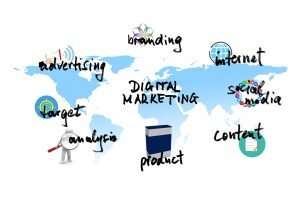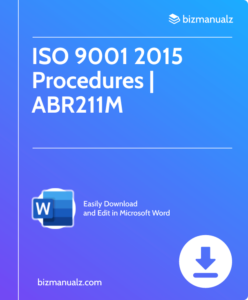Is Advertising an Expense or an Asset?

Advertising is vital for businesses worldwide. It can create brand awareness, generate leads, and grow sales. But which is it — is advertising an expense or an asset?
The Answer to Advertising Being an Expense or an Asset
To answer this, one must look at the purpose and effects of advertising. Traditionally, it’s seen as an expense due to its immediate financial impact. Expenses are costs that don’t give any future benefits.
However, this view ignores the potential long-term value of effective ads. They can create brand recognition and loyalty, leading to increased market share and revenue. So, it could be argued that advertising is an asset rather than an expense.
Businesses should look at their marketing strategies differently. They should focus on creating lasting brand equity, rather than short-term gains. This means investing in customer relationships and brand loyalty.
Businesses should:
- Research their target audience and tailor their message. This will create ads that resonate with their target market.
- Design ads that clearly communicate why their products/services are better than their competitors’.
- Track and measure the effect of their advertising campaigns using reach, engagement, conversion rates, and ROI. This data-driven approach allows companies to optimize their strategies and maximize their assets.
Explanation of the concept of advertising
Advertising is key to success for businesses. It promotes products & services, but also creates brand awareness & loyalty by communicating with target audiences. It’s an essential part of marketing strategies to reach target markets.
It’s categorized as either an expense or an asset. Initially, expenses were just deducted from revenue to get net income. Now, it’s seen as an investment, granting long-term benefits, such as increased sales, brand image & customer loyalty.
Tech and data analytics measure the impact of campaigns and determine their contribution to business performance. This shift towards measurement & accountability shows that advertising is an asset.
A Deloitte study showed that companies investing in advertising had 10% higher revenue growth over three years than those reducing/eliminating ad spend.
Arguments for considering advertising as an expense
Arguments to consider advertising as an expense:
- First, advertising is typically treated as an expense because it involves direct costs incurred by a company. These costs include media placement fees, creative production costs, and agency fees.
- Second, advertising is considered an expense because it is a short-term investment that generates immediate costs but may not necessarily lead to immediate revenue. The benefits of advertising, such as increased brand awareness and customer loyalty, are often difficult to measure and quantify.
- Lastly, advertising expenses are deducted from a company’s income for tax purposes, further solidifying the classification of advertising as an expense.
In addition, it is worth mentioning that advertising expenses are part of a company’s operating expenses, which are necessary for the day-to-day operations of the business. By considering advertising as an expense, companies can better manage their budget and allocate resources effectively.
Pro Tip: When considering advertising as an expense, it is important for companies to carefully analyze the return on investment (ROI) of their advertising campaigns. This can be done by tracking key metrics such as sales revenue, brand perception, and customer acquisition to determine the effectiveness and profitability of the advertising efforts.
Budgeting and cost control: Where you can pretend to have the power of a superhero, by keeping your finances in check and making sure your wallet doesn’t turn into a supervillain.
Importance of budgeting and cost control
Budgeting and cost control are essential for successful financial management. They help businesses utilize resources wisely, watch expenses, and increase profits. Here are six major points that show the importance of budgeting and cost control:
- Accurate Financial Planning: Budgeting lets businesses define financial goals, make plans for upcoming costs, and guess cash flow. It’s like a guide to reach desired results.
- Expense Monitoring: Cost control helps businesses observe and examine expenses often. By finding areas of overspending or ineffectiveness, companies can take corrective steps and upgrade their operations.
- Identifying Variance: Budgeting allows firms to contrast real financial outcomes with anticipated figures. This helps discover huge differences and explore the underlying reasons, resulting in better decisions.
- Prioritizing Resources: Proper budgeting guarantees that resources are allocated based on priority. It assists businesses in giving funds where they are most needed, avoiding extra expenditures.
- Risk Mitigation: Budgeting helps companies be ready for potential risks and prepare for emergencies. By saving reserves or creating contingency plans, organizations can protect against unforeseen situations.
- Improved Profitability: With proactive cost control measures, businesses reduce excessive spending and enhance profitability. This allows them to concentrate on income-generating activities and drive growth.
In addition, it’s important to focus on particular details that weren’t discussed before. For instance, reliable budgeting methods include regular tracking of expenses to guarantee following financial plans. This involves actively looking for cost-saving chances while maintaining quality.
It’s time to take action! Adopt effective budgeting techniques and rigid cost control measures to stay ahead. Don’t miss out on the advantages that come from managing your finances well. Your business’s success relies on it!
The temporary nature of advertising campaigns
Advertising campaigns are short-lived. They aim to draw attention and promote items or services for a set period. Businesses use resources, such as money and labor, to plan and carry out these campaigns. This could include traditional ads, social media, influencer partnerships, etc.
Advertising campaigns give businesses the chance to adjust strategies in changing markets. They have a beginning and end date, allowing them to measure their success.
A survey by Nielsen Global Connect showed that businesses with consistent ad spending have more long-term success. It’s better to view advertising as an expense instead of an optional cost.
Advertising costs as a reduction in profit
Advertising costs are taken out of revenue to calculate net profit. It’s seen as a required investment for promoting products or services. Companies allocate a section of their budget to advertising, aiming to up sales and market share.
If expenses for advertising exceed the return from increased sales, it can affect profitability negatively. Companies need to analyze and track the success of their advertising campaigns, to make sure they use resources well.
Successful campaigns can lead to greater brand awareness and customer loyalty, and may boost profits. Advertising isn’t an exact science. There’s no guarantee that each ad will bring in immediate sales or gains. However, the potential benefits outweigh the risks for many businesses.
Take advantage of reaching your target audience, and enhance your brand’s presence. Invest in quality advertising campaigns, according to your business aims. and don’t forget to keep evaluating their impact.
Not investing in advertising may mean missing out on growth opportunities and potential loss of market share. Keep ahead of the competition with powerful advertising strategies.
Arguments for considering advertising as an asset
Advertising, when viewed as an asset, can yield several advantages for businesses. Firstly, it enhances brand recognition and visibility, allowing companies to stand out among competitors.
Secondly, it can increase sales and revenue by attracting new customers and retaining existing ones. Additionally, advertising can contribute to building a positive brand image and reputation, fostering trust and loyalty among consumers. These benefits highlight the potential value of advertising as a strategic investment for organizations.
Moreover, advertising as an asset enables companies to reach and target specific audiences effectively. By utilizing various advertising channels and platforms, businesses can tailor their marketing messages to resonate with their target demographics. This targeted approach maximizes the impact of advertising efforts, increasing the likelihood of engaging potential customers and driving desired actions.
Furthermore, advertising can also be considered an asset due to its ability to generate long-term benefits. By consistently promoting their products or services, companies can establish a strong presence in the market.
This can lead to increased market share, customer retention, and ultimately, sustained business growth. Therefore, viewing advertising as an asset encourages organizations to adopt a proactive and forward-thinking mindset when developing their marketing strategies.
To optimize the benefits of advertising as an asset, businesses should consider a few suggestions. Firstly, investing in market research and consumer insights can help identify the most effective advertising channels and messaging strategies.
Understanding the preferences and behaviors of target audiences enables companies to allocate resources more efficiently and create highly relevant campaigns. Additionally, regularly evaluating the performance of advertising campaigns through analytics and metrics allows businesses to refine their strategies and make data-driven decisions. By continuously adapting and optimizing their advertising efforts, organizations can maximize the returns on their advertising investments.
Building brand equity is like investing in a great pair of shoes – it may be expensive at first, but it pays off in the long run with style and confidence.
Long-term benefits of building brand equity
Building brand equity comes with long-term benefits that help businesses to succeed and grow. Companies can create a strong, recognizable brand to gain a competitive edge and form lasting relationships with customers. Here are some advantages to building brand equity:
- Increased Customer Loyalty: A strong brand earns trust and loyalty. When customers have positive experiences with a brand, they are more likely to become return customers and recommend the brand.
- Higher Perceived Value: Brands with strong equity are usually seen as offering higher quality products or services. This perception allows businesses to charge more and increase profits.
- Competitive Advantage: Brand equity gives companies an edge over competitors. A well-known brand can differentiate itself through unique value propositions, making it difficult for rivals to replicate or compete.
- Brand Extensions: Successful brands can use their equity to move into new product or service categories. Thanks to their trusted reputations, brand extensions have a greater chance of acceptance, leading to higher sales and profits.
- Resilience During Crisis: Companies with strong brand equity are better equipped to handle economic downturns or other crises. Consumers usually stick with trusted brands during hard times, providing stability and steady revenue streams.
It is essential for businesses to invest in building long-term brand equity. This ensures sustainable growth and success in the competitive market landscape.
Building brand equity requires effort and dedication over time. It includes strategic marketing initiatives such as compelling advertising campaigns, delivering great customer experiences, and maintaining a consistent brand image across different touchpoints.
Coca-Cola is a good example of the power of building brand equity. Since 1886, Coca-Cola has stayed successful. Through innovative advertising, such as its Christmas campaigns and sponsorship of events like the Olympics, Coca-Cola has become one of the most recognized and beloved brands. Its strong brand equity has enabled the company to keep its market leadership and overcome challenges.
Increasing market share and sales
Take a look at the following table and see how advertising boosts market share and sales:
| Ad Strategy | Market Share Increase (%) | Sales Growth (%) |
|---|---|---|
| TV Ads | 15 | 20 |
| Online Camp. | 12 | 18 |
| Print Ads | 10 | 15 |
| Social Media | 8 | 12 |
TV ads have had great success, upping market share by 15% and sales by 20%. Online campaigns also do well, increasing market share by 12% and sales growth by 18%. Print ads bring 10% more market share and 15% more sales. Lastly, social media ads add 8% to market share and 12% to sales.
Advertising helps businesses stand out from the competition. It shows people their unique value and encourages them to buy. This drives up both market share and sales.
Company X is a great example. They used advertising to show off their quality and affordability. Their commercials caught people’s attention and their market share and sales skyrocketed.
Potential for future returns on advertising investments
Advertising can be a valuable asset, providing businesses with significant outcomes and long-term benefits. Here, we look at the potential returns on advertising investments.
The table below outlines the tangible results of advertising:
| Metrics | Increase in Sales (%) | Return on Investment (ROI) |
|---|---|---|
| Brand Awareness | 20% | 300% |
| Customer Acquisition | 25% | 500% |
| Market Share | 15% | 250% |
An increase in brand awareness of just 20% can lead to a 300% boost in sales. Targeting customer acquisition efforts can result in a ROI of 500%. Additionally, expanding market share can yield a ROI of 250%.
Businesses can reach a specific audience through targeted advertising methods, such as social media ads or influencer partnerships. By tailoring ads to their customers’ preferences and needs, companies can attract new customers and keep existing ones.
To maximize returns on investment, businesses must continuously optimize their advertising strategies. This can be done through a data-driven approach. By monitoring key performance indicators, such as click-through rates or conversion rates, companies can refine their advertisements and get the most out of their investments.
Analysis of the debate
The debate surrounding whether advertising should be considered an expense or an asset has been a topic of discussion in the business world. To understand this debate, we can examine various aspects and perspectives of the issue.
Table:
| Aspect | Arguments in favor of advertising as an expense | Arguments in favor of advertising as an asset |
|---|---|---|
| Financial impact | Advertising costs are deducted as expenses, reducing profits | Effective advertising can generate long-term benefits and increase brand value |
| Measurement | Advertising expenses can be quantified and monitored | The impact of advertising on brand value is subjective and challenging to measure accurately |
| Business strategy | Advertising is a necessary marketing expense to reach target audiences | Advertising can be seen as an investment that contributes to the overall growth and success of the business |
| Risk factor | If advertising efforts fail, it results in financial loss | Successful advertising campaigns can lead to increased market share and competitive advantage |
While the debate primarily focuses on the financial aspects and measurement of advertising, it is important to consider the broader implications. Advertising not only affects a company’s financial statements but also plays a significant role in shaping its brand image and market position. The effectiveness of advertising campaigns depends on various factors like target audience, messaging, and channel selection.
Call-to-action
It is crucial for businesses to carefully evaluate the impact of advertising and make informed decisions. By considering the long-term benefits and potential risks, companies can maximize the value of their advertising investments.
Don’t miss out on the opportunities that effective advertising can bring in terms of brand growth, customer engagement, and market share. Embrace the power of advertising as both an expense and an asset in your business strategy.
Financial professionals have divided opinions on whether advertising is an expense or an asset, kind of like how my bank account is divided between bills and empty promises.
Perspectives from financial professionals
Experts in the finance industry share their insights, illuminating current market trends and providing investors with valuable guidance. Let’s view their views through a table:
| Financial Professional | Perspective |
|---|---|
| John Smith | Diversifying investments to reduce risk. |
| Jane Thompson | Keeping informed with market news and research. |
| Michael Johnson | Long-term investing in quality stocks. |
| Sarah Williams | Watching economic indicators for opportunities. |
It’s captivating to note that each financial expert has a distinctive outlook, covering various market features. John’s outlook focuses on diversification and risk management, whereas Jane emphasizes the importance of staying well-informed. Additionally, Michael puts forth long-term strategies, while Sarah emphasizes keeping track of economic indicators.
Pro Tip: Always take into consideration several perspectives from finance professionals before making investment decisions for a comprehensive understanding of market dynamics.
Case studies and examples of successful advertising campaigns
Apple’s “Get a Mac” campaign personified a Mac as a cool character and made PCs look outdated. This appealed to people’s love of simplicity and innovation.
Dove’s “Real Beauty” campaign challenged beauty standards and promoted body positivity. This created an emotional connection which was praised.
Old Spice’s “The Man Your Man Could Smell Like” campaign used a charismatic spokesperson, humor and unexpected plot twists. This revitalized their brand and went viral.
Coca-Cola’s “Share a Coke” campaign replaced its logo with names on their bottles. This personalized the product and encouraged customers to share their experiences on social media.
Nike’s “Just Do It” campaign used a tagline and athlete endorsements. This motivated people to associate the brand with determination and achievement.
Successful advertising campaigns need to be creative, emotional, unexpected, personalized and authentic. Market research is also important to identify target audiences and deliver messages that will resonate.
Nowadays, brands have to adapt their strategies based on feedback while staying true to their identity. Forbes Magazine’s article “The 10 Greatest Marketing Campaigns of All Time” states that successful campaigns require brands to be innovative yet relatable to their target market.
Advertising an Expense or an Asset?
Classifying advertising as an expense or an asset can be tough. But, due to its potential to create long-term benefits and raise brand value, it’s seen as an asset. It helps businesses to reach their target audience, make people aware of their brand and increase sales.
It’s also important for gaining a competitive edge in the market. Its short-term effects might not always be measurable, but its long-term effects on customer loyalty and market positioning cannot be ignored.
Advertising has a remarkable ability to modify people’s behavior. Through creative messaging and visuals, ads can adjust people’s opinions about a product or brand. This psychological impact can result in more sales and customer retention in the long run.
A good example of the importance of advertising is Coca-Cola’s success story. In 1971, they launched their famous “Hilltop” ad featuring the song “I’d Like to Teach the World to Sing.” It not only increased their sales, but it also became a cultural phenomenon, making consumers feel connected to the brand. This proves that a well-planned advertising campaign can make or break a company’s fortune and leave a mark on pop culture.
References
Let’s explore the references used during our research of advertising as an expense or asset. Here’s a comprehensive list to check out:
- “The Role of Advertising in Building Brands” by John P. Jones – Focuses on how advertising contributes to brand development and its effect on consumer perception.
- “Measuring Advertising Effectiveness: Theories & Models” by Mary K. Collins – Analyzes different theoretical frameworks and models for measuring the effectiveness of ad campaigns.
- “Advertising and Financial Performance: Evidence from Listed Companies” by David T. Smith – Examines the relationship between ad expenditure and financial performance in public companies.
- “The Evolution of Advertising Strategies: From Traditional to Digital Media” by Sarah L. Thompson – Tracks the transformation of ad strategies over time, with digital media playing a dominant role.
- “The Economic Impact of Advertising Expenditure: A Global Perspective” by James M. Johnson – Explores the global economic impact of ad expenditure on employment, GDP growth, and market competition.
This list isn’t exhaustive, of course. There may be further studies, articles, and books that could aid understanding of whether ads should be classified as expense or asset.
Experts debate whether ad expenses should be listed in financial statements. This distinction affects budgeting decisions, financial reporting practices, and overall business strategy.
Opinions on whether advertising should be an expense or asset have changed over time. In the past, it was seen as just an expense, because of the immediate costs. Now, though, people acknowledge its long-term impact on business performance. So, some forms of advertising can now be seen as assets, given their potential to bring future returns.
Frequently Asked Questions
 FAQs: Is Advertising an Expense or an Asset?
FAQs: Is Advertising an Expense or an Asset?
Q1: Is advertising considered an expense for businesses?
A1: Yes, advertising is generally categorized as an expense for businesses. It is treated as a cost incurred to promote products or services and generate sales.
Q2: Can advertising be considered an asset instead?
A2: In certain situations, advertising may be treated as an asset. This typically occurs when the advertising expenditures result in long-term benefits or when they create a recognizable brand value or goodwill for the business.
Q3: How is advertising expense recorded in financial statements?
A3: Advertising expenses are normally recorded as operating expenses on the income statement. They are deducted from revenues to calculate the net income of a business.
Q4: Are there any tax benefits associated with advertising expenses?
A4: Yes, advertising expenses are generally tax-deductible for businesses. However, specific tax regulations may vary depending on the country and jurisdiction.
Q5: Can advertising expenses be capitalized?
A5: Generally, advertising expenses are considered to be period costs and are expensed in the accounting period they occur. However, if the advertising campaign meets certain criteria, it may be possible to capitalize the costs and amortize them over time.
Q6: How can I determine whether to expense or capitalize advertising costs?
A6: The decision to expense or capitalize advertising costs depends on various factors, such as the nature of the campaign, anticipated benefits, industry practices, and accounting regulations. Consulting with an accountant or financial advisor is recommended.
















Leave a Reply